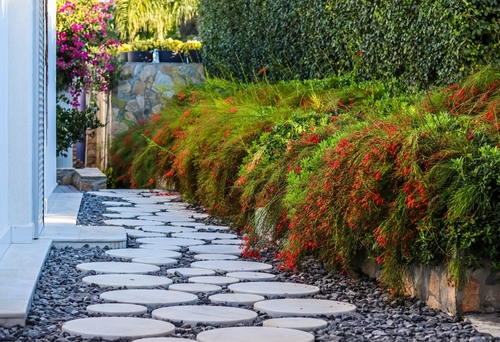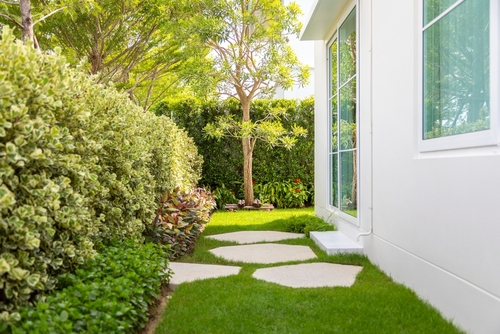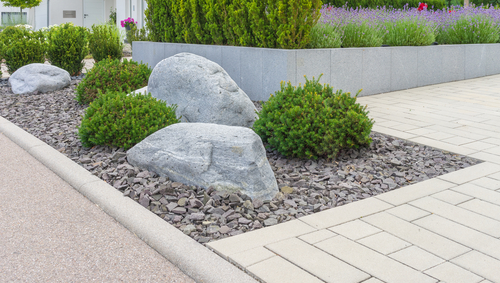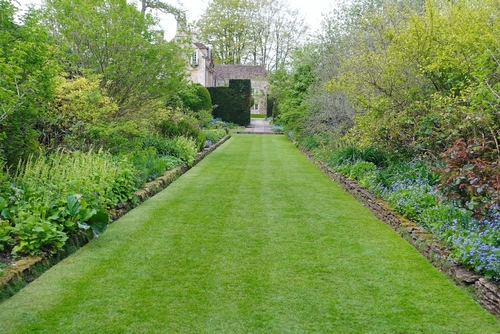
How to Achieve and Maintain a Healthy Lawn
July 24, 2024
How to Choose the Right Poolside Plants in Singapore?
October 9, 2024How to Choose the Right Landscaping Style for Your Home

How to Choose the Right Landscaping Style for Your Home
How to Choose the Right Landscaping Style for Your Home? Landscaping is one of the most essential elements that can transform a house into a home.
The right landscaping not only enhances the beauty of your property but also adds functionality and value.
With so many different landscaping styles to choose from, it can be overwhelming to decide which one suits your home best.
Each style offers a unique aesthetic and requires specific maintenance, making it important to understand the characteristics of various landscaping styles.
This article will guide you through the process of choosing the right landscaping style for your home, taking into account your home’s architecture, your personal preferences, and practical factors like budget and maintenance requirements.
Understanding Your Home’s Architecture
Complementing Your Home’s Style
Your home’s architectural style should be the first factor you consider when choosing a landscaping style. The landscape should complement the design of the house to create a cohesive look.
For example, a modern home with clean lines and minimalist features might be best suited for a contemporary landscape with simple geometric shapes, sleek materials, and minimal plantings.
On the other hand, a cottage-style home may look more harmonious with a lush, flower-filled English garden.
Matching the landscaping to the architectural style of your home creates a balanced and appealing aesthetic. A well-integrated landscape helps elevate the overall curb appeal, making your property more attractive.
Incorporating Natural Surroundings
In addition to your home’s architecture, you should also consider the natural surroundings. Consider the climate and soil conditions to ensure your chosen landscaping style thrives in your area.
Assessing Your Lifestyle and Needs

For families with children, a family-friendly landscape with open spaces for play and durable, safe materials may be the best choice.
If you enjoy entertaining, consider adding an outdoor kitchen, dining area, or fire pit to create a social hub. For those who prefer relaxation, a meditation garden or peaceful water feature can offer tranquility.
Your lifestyle also dictates how much time you can spend maintaining your landscape.
Some styles, like formal gardens or tropical landscapes, require regular maintenance such as pruning, watering, and mowing, while others, like xeriscaping or modern minimalist gardens, are designed for low-maintenance living.
If you’re looking for a garden that doesn’t demand much time or effort, a minimalist design with drought-tolerant plants or native species may be ideal.
Exploring Different Landscaping Styles
Modern Landscaping
Modern landscaping is characterized by clean lines, minimalistic plantings, and the use of sleek materials like concrete, stone, and metal.
Plants are used sparingly and are often chosen for their architectural shapes. Geometric designs, structured layouts, and contemporary lighting are common features in modern landscapes.
Modern landscaping is perfect for homeowners who prefer a minimalist aesthetic and desire a low-maintenance garden. The use of hardscaping, such as concrete pathways or stone walls, reduces the need for regular upkeep.
Traditional Landscaping
Traditional landscaping emphasizes symmetry, structure, and formality. It often features neatly trimmed hedges, manicured lawns, and carefully designed flower beds.
Elements such as fountains, statues, and formal pathways are often found in traditional landscapes.
This style complements homes with classic or colonial architecture and is ideal for those who appreciate a more formal and structured garden.
However, traditional landscaping requires regular maintenance, including pruning, mowing, and trimming to keep the formal design intact.
Cottage or English Garden Style
The cottage garden or English garden style is known for its romantic, abundant, and slightly wild look. It’s filled with a mix of flowering plants, vines, shrubs, and trees, creating a lush, colorful environment.
Pathways are often winding and informal, with natural stone or gravel. This style is perfect for homeowners who love the look of a whimsical, storybook garden.
While it may appear freeform, cottage gardens require regular attention to keep the plantings healthy and attractive. They work well with both traditional and cottage-style homes, adding a charming and welcoming appeal.
Mediterranean Landscaping
Inspired by the landscapes of Southern Europe, Mediterranean landscaping is designed to thrive in hot, dry climates.
Natural stone, terracotta, and gravel are often used in hardscaping. Water features, such as fountains, are commonly included to create a sense of tranquility.
Mediterranean landscapes are ideal for homeowners in warm climates looking for a low-water garden that is still lush and beautiful.
Tropical Landscaping
Tropical landscaping creates a lush, exotic atmosphere with plants that have large leaves, bold colors, and dense foliage.
Palms, ferns, hibiscus, and bamboo are often used, along with water features like ponds or small waterfalls. Tropical landscaping is designed to evoke a resort-like feel and is perfect for warm, humid climates.
This style is ideal for homeowners who want a vibrant, lively garden, but it requires regular maintenance, as tropical plants can grow quickly and need frequent care.
Xeriscaping
Xeriscaping is a style focused on water conservation and is perfect for dry or arid climates. This style uses drought-tolerant plants like cacti, succulents, and native species.
Hardscaping elements, such as gravel, rocks, and mulch, are used instead of traditional lawns to reduce water usage.
Xeriscaping is the best choice for homeowners looking for a low-maintenance, eco-friendly landscape that reduces water consumption. It’s a great option for areas prone to drought or water restrictions.
Practical Considerations

Budget
Your budget will play a significant role in determining the landscaping style you choose.
Some styles, such as formal gardens or tropical landscapes, require more plants, hardscaping materials, and ongoing maintenance, which can increase costs.
On the other hand, styles like xeriscaping or modern minimalist gardens may be more budget-friendly, especially in terms of long-term upkeep and water usage.
When planning your landscape, it’s important to account for both the initial costs and the maintenance costs over time. A professional landscaper can help you determine a realistic budget based on your design choices.
Climate and Soil Conditions
Not all plants thrive in every climate, so it’s important to consider the climate and soil conditions in your region when choosing a landscaping style.
For instance, tropical plants may not do well in colder climates, while Mediterranean plants thrive in dry, sunny conditions. Make sure to select plants and materials that are well-suited to your local environment.
Testing your soil conditions can also help you understand what types of plants will grow best in your yard. If your soil is too sandy, too clayey, or lacks nutrients, you may need to amend it or choose plants that are tolerant of those conditions.
Long-Term Sustainability
In today’s environmentally conscious world, many homeowners are opting for landscaping styles that promote sustainability.
Xeriscaping, for example, uses less water, while native landscaping incorporates plants that are naturally suited to the local environment, requiring fewer resources to maintain.
Consider incorporating eco-friendly features such as rain gardens, composting, and solar-powered lighting to reduce your environmental footprint.
These features not only make your garden more sustainable but can also increase the value of your home.
Creating a Master Plan

Once you’ve chosen a landscaping style, it’s essential to create a master plan for your yard. This plan should outline where key features like plants, trees, pathways, and structures will go.
You can either hire a professional landscape designer or use garden design software to map out your ideas.
Don’t forget to incorporate functional elements into your landscaping plan.
Features like outdoor seating, garden lighting, storage sheds, and water features can enhance the usability and aesthetic appeal of your outdoor space. Ensure that these elements align with your chosen style and serve a practical purpose.
How to Choose the Right Landscaping Style for Your Home – Conclusion

Choosing the right landscaping style for your home is a personal decision that requires a balance of aesthetic preferences, functionality, and practical considerations.
Whether you prefer the sleek lines of modern landscaping, the lush abundance of a cottage garden, or the eco-friendliness of xeriscaping, the key is to select a style that enhances your home’s architecture and suits your lifestyle.
By considering factors such as maintenance, budget, climate, and your long-term needs, you can create a beautiful and functional outdoor space that you’ll enjoy for years to come!
Are you seeking professional and reliable landscaping contractors in Singapore? Contact us today!




